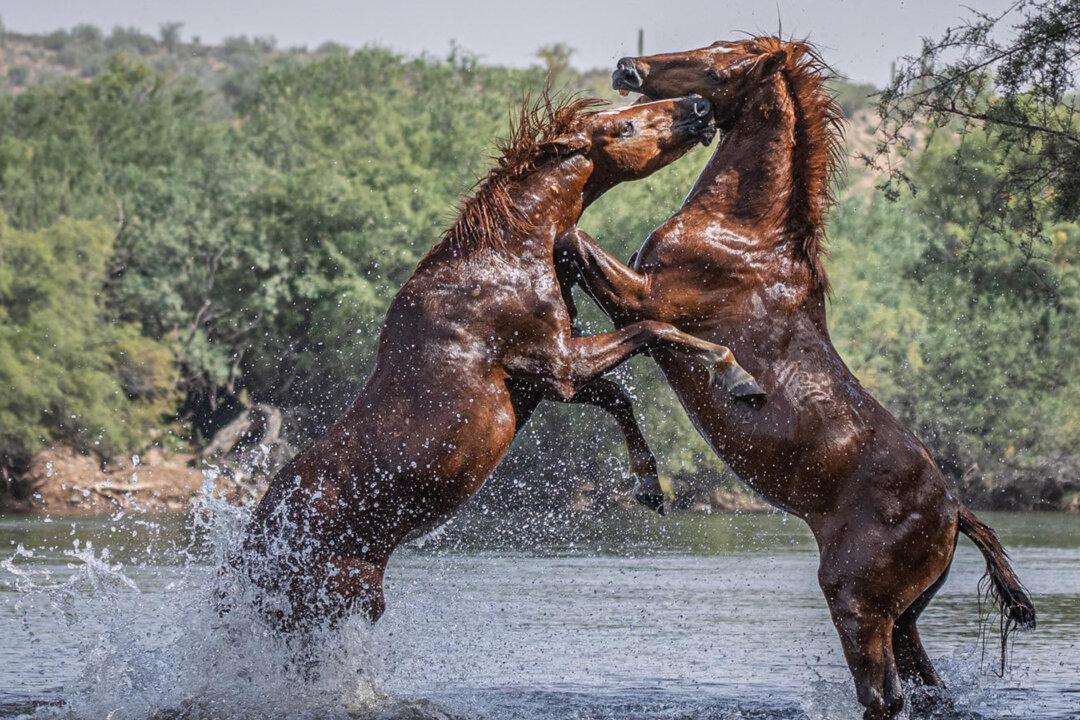A wildlife photographer from Arizona has been braving the desert heat and the risk of snake bites to capture breathtaking shots of majestic wild horses in action.
Susan Goudge, 74, is the daughter of a U.S. Navy Veteran who grew up all over the country. Today, she lives with her husband not too far away from the Salt River—a hotspot for wild horses.





